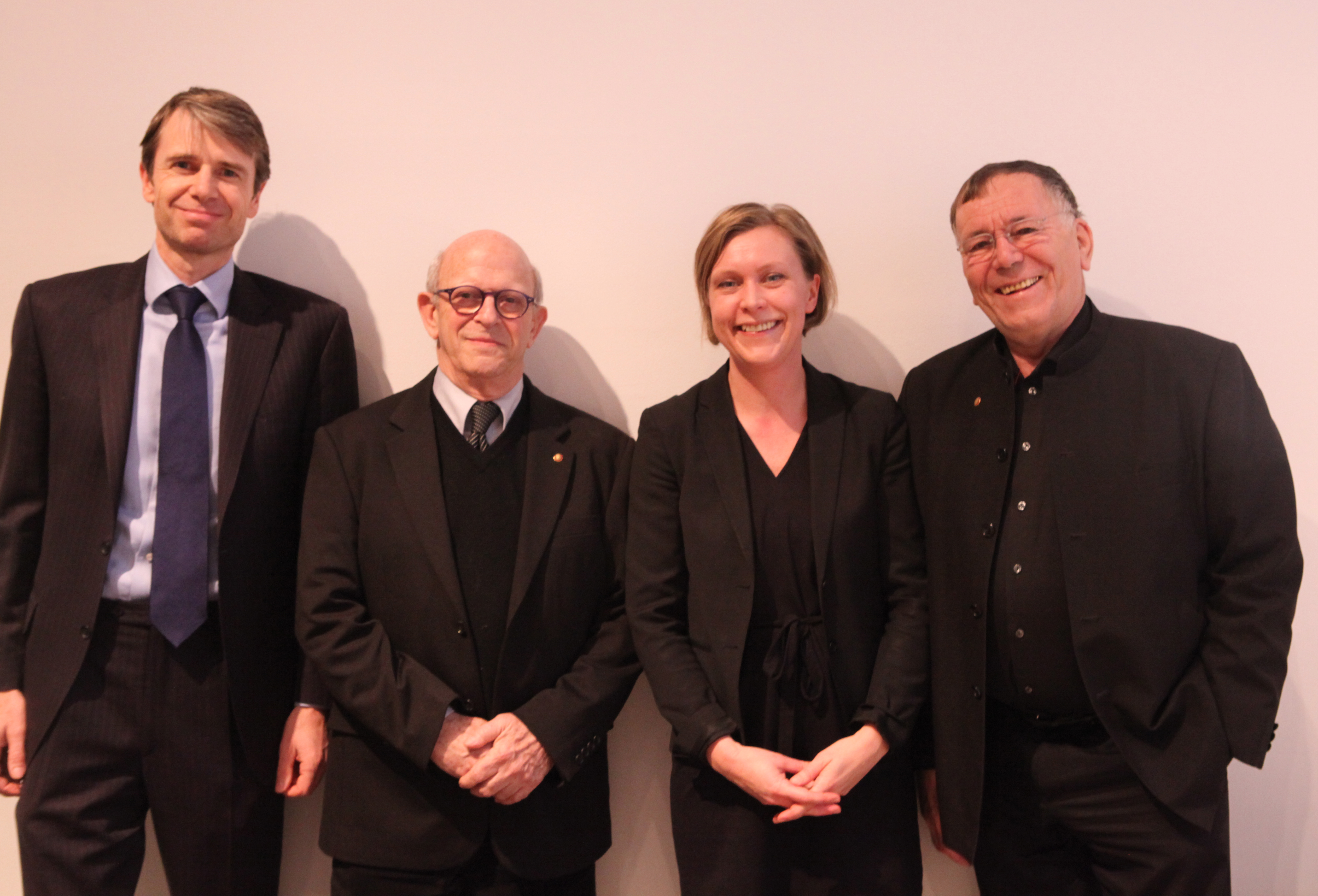by: ac
The Center for Architecture hosted authors Jan Gehl and Birgitte Svarre at the 02.05.14 Oculus Book Talk, co-sponsored by the AIANY Planning & Urban Design Committee. AIANY 2014 President Lance Jay Brown, FAIA, pronounced Gehl as “my hero” and a “kindred spirit” laying the ground work for a warm and delightful evening.
Gehl and Svarre’s How to Study Public Life is a refreshing manual for how to engage design professionals and the general public to observe, analyze, and assess the nature of their city. Renowned practitioners and inventors of the discipline of public life studies, Gehl and Svarre give us a simple blow-by-blow description of how they developed their method of working through five decades, and how these seemingly simple constructs resulted in very successful examples of urban life in Melbourne, Copenhagen, and New York City. In light of advanced technologies that gather and cull data to study the populous, this book is a DIY version of how to study public life. The result of haptic counting and face-to-face observation has resulted in the brilliant evolution of the Good City movement. Gehl explains his methods by giving a personal history. Educated as an architect in the 1960s, he reacted against the grand, formal, Modernist gestures in cities. He married a psychologist who asked, “Why don’t you think about people?” Thus, this handmade urbanist was born. Throughout Gehl’s talk and the book he alludes to the fact that prior to the World War I, buildings and cities were made by hand and that craft orchestrated the intimate quality of the public space,. His method or “tools,” as it’s referred to in the book, mirror this fact. These tools are “almost for free” and elegant. Methods, such as counting, mapping, tracing, and tracking, result in the kind of poetic data that cities need.
The most illuminating page of the book is page 40. Gehl and Svarre are amazingly gracious in setting out the history of the movement that they helped to establish. The timeline of texts that discuss public life studies is a powerful illustration of the lineage and clarity of urbanist thought. The graph sets Camillo Sitte, Ebenezer Howard, and Le Corbusier far from the idea of public life studies, and establishes Jane Jacobs, Aldo Rossi, and Denise Scott Brown, Steven Izenour, and Robert Venturi as the grandparents of the movement. Interesting was the inclusion of the works of Edward Hall and Robert Sommer, which are cornerstones of the interior design discipline of human behavior. With one clear timeline, the authors link all the building arts into the realm of public studies.
Gehl stays away (in an honest way) from the tough issues of security, poverty, and how night-time conditions can change a city. The book does investigate the questions of public space in light of climate, shade, and wind. What Svarre responded to when challenged at the February book talk about the study of public space at night is that the tools set out in the book could be easily appropriated to study the condition. Most importantly, Svarre proposes that these techniques can empower the public to assess their environment, and it’s the simple tools and observations that ultimately make policy. The catalog of various academic projects is fascinating. The Active Passive façade study done with the Royal Academy of Arts architecture school, and a more up-to-date study of pedestrians with GPS devices both prove that evidence-based research can garner significant critical thinking through simple means.
At the end of the book talk Gehl told a story about the many children in Copenhagen and the popularity of bicycle carriages. The evidence of many children equaling a healthy city is illustrated through the carefully crafted policies that shore up the strong bicycle culture of the city. Simple commercial policies like taxis and public transport capable of carrying bicycles calibrates a healthy city, which equals a prosperous city and a good city. Gehl and Svarre have personally crafted such an ideal with their work.
Annie Coggan is a principal with Coggan and Crawford Architects, and teaches at the Fashion Institute of Technology and the School of Visual Arts in New York City.
Event: Oculus Book Talk: Jan Gehl and Birgitte Svarre, How to Study Public Life
Location: Center for Architecture, 02.05.14
Speakers: Jan Gehl, Founding Partner, Gehl Architects; Birgitte Svarre, Project Manager, Gehl Architects; Jarl Frijs-Madsen, Ambassador, Consul General of Denmark in New York; and Lance Jay Brown, FAIA, AIANY 2014 President
Organized by: AIANY Oculus Committee













